All Facebook pages are not created equal.
Cute Babies has over 3,000,000 loyal fans and Facebook has over 163,000,000 fans. What’s their secret? What elements contributed to their success and how can you tap into them?
When it comes to social media marketing, Facebook is #1. In fact, one recent study found that Facebook drives more ecommerce sales than Pinterest.
And, according to Statista, Facebook also drives 20x more traffic Twitter.
If you want your ideal customers to like your page and follow you, you have to continually reward them with great content and build an engaged community for them. Socially Stacked discovered that “42% of fans like a page to get a coupon or discount.”
There are so many ways to reward your fans and inspire new users to like your page and wholeheartedly promote it across their social networks. You can see the 16 elements discussed in this article on many successful Facebook pages.
Let’s get started:
[youtube https://www.youtube.com/watch?v=pbTlpO8V_4k]
1). Give your fan page a human touch
Have you heard the old saying, “It’s not personal, it’s just business”? That may be true, when you’re launching a new product that will solve a problem for your target audience, but Facebook pages should be more personal than business.
To enlighten you more on the importance of a personal touch, Dacher Keltner posted a video to explain that compassion is literally in our fingertips. He said that “to touch is to give life.” Although Keltner was talking about physical touch, the idea is the same.
Humans can touch one another physically and emotionally.
If you approach Facebook marketing with the mindset of making money, you may end up wasting your time. Remember, Facebook is first and foremost a “social” network, not a “business” network.
According to Jennifer Shaheen, living online today is social and that means personal. Administrators of high-converting Facebook pages give the human touch to everything that they do on the page.
One way to connect on a more personal level is by posting videos on your page. If the video is useful, the fan response is stronger and deeper. They’ll also develop a better rapport with you, since they see you not just as a marketer, but as a human being who understands their feelings and desires.
You can connect more on a personal level by replying to a comment on your page or addressing a question or problem.
Darren Rowse knows how to connect with fans and touch them. He does this by promptly responding to their comments.
Marie Forleo is also a very successful digital marketer. But, as busy as she is, she still finds time to reply to comments and engage with her audience. Her Facebook page is approaching 300,000 fans, and, since she may not be able to keep up with all comments on her own, she’s trained someone on her team to handle the comments and continually give the personal (human) touch.
Marie Forleo frequently posts high quality videos, as well. Take a look:
And, Yaro Starak, founder of Entrepreneurs-Journey.com, also frequently shares videos on his fan page:
2). Use the 3-facet content approach (educate, excite and entertain)
Content marketing is a powerful tool for driving qualified traffic and leads on social networks. But, the challenge lies in producing engaging content on a consistent basis.
So, how can you best create useful content for your blog that, when you share it on your Facebook page, your fans will enjoy it?
If you want your content to be useful, practical and engaging to your fans, use the 3-facet content approach:
Excite: Millions of blog posts are published every day. But, they never get much traction, if any, because they don’t excite anyone.
The way to excite your fans starts with a high quality headline. Yaro Starak shared a post, not too long ago, on his fan page. Be honest: are you drawn in by the headline?
You don’t just need a clear headline – you need a clearly relevant one. It has to be clear and targeted at the right audience. If you try to be clever, you miss the purpose of the headline. Excite with your content headline. Make people click in anticipation.
Entertain: Entertain your audience, either by amusing or by intriguing them. According to Jonah Berger, one of the reasons why content goes viral is humor. Providing interesting material in a humorous way can help drive your message home. People love to laugh, including your fans.
Any content that amuses your fans and target audience has a greater chance of getting shared. But, “funny” isn’t the only kind of entertaining. If your post will make people think back or visualize the future, that’s a form of entertainment, too.
Take Chris Ducker’s page, for example. He constantly shares quotes that have high quality graphic design on a solid color background. The large image size and aspect ratio make these eye catching and memorable for potential customers. If you watch closely, you’ll see how much engagement this technique is creating.
Educate: The right content will answer a specific question or challenge.
When you write content, follow this path: excite with your headline, entertain with your visuals (photos, videos, cover photo, profile picture, timeline cover, graphic design, image sizes, etc) and educate with your bullet points and paragraphs.
Your Facebook page should be a source of education for your fans and customers alike. If you’re only providing entertainment, your fans may stop following you. They didn’t come for entertainment, even though they enjoyed it. They want you to help them solve their problem.
In short, they came to learn something new. When you visit Traffic Generation Cafe’s fan page, Ana Hoffman will educate you on different topics, including how to drive traffic to your site, from search engines and other social networks.
3). Project your brand’s attributes
Every brand has a personality – characteristics, features and traits. I’ve noticed, recently, that high-converting Facebook pages project their brand’s attributes more than those pages that don’t convert as well. This should be clear at first sight with your timeline cover, which has high potential for impact due to its large image size.
For example, Lewis Howes has built a strong personal brand around his flagship product, “The School Of Greatness.” On his Facebook page, he projected that strength, right on the cover image:
I also found that high-converting Facebook pages are always consistent with the owner’s blog.
In other words, the elements present on the blog are transferred or used to create the Facebook page. For example, Michael Hyatt gives away a valuable report entitled, “Shave 10 Hours Off Your WorkWeek.”
He replicated the same graphic design on his Facebook page, where he uses a fan-gating technique to get more email subscribers. The profile picture is used to emphasise the initial impact of the cover photo. In other words, before you can download the free ebook, you’ve got to sign up.
Tony Robbins, the highly successful public speaker, does exactly the same thing on his social channel. He promotes his New York Times #1 Bestseller, Money Master The Game: 7 Simple Steps To Financial Freedom.
4). Understand the end buyer
According to Marketing Donut, you can use existing data to understand your end buyer. On your Facebook page, you want to make sure that you’re constantly studying your target audience, to appeal to potential customers who visit your social network.
Edison’s Research showed that Facebook is the dominant web site in social media marketing and also provides a great source of data for understanding your end buyer.
Apple constantly mines existing data about iPad customers. Afterwards, they’ll segment the audience, based on their specific needs. This has kept iPad’s sales high for over 4 years.
Time is precious and any potential customer who invests a portion of their available time with you is worth appreciating. So, if you discover that some of your fans are loyal, responding to your posts, leaving comments and following you willingly, you’ve got to think of ways to bring them to your blog.
Ramsay Taplin knows how to bring his fans back to his blog posts from his social network. Once they’re there, if they’re not yet subscribers, a pop-up will appear that doesn’t annoy users or overlap with the content.
The more that you neglect your fans and only communicate on another person’s platform (yes your Facebook page is not yours, it’s owned by Facebook), the more you risk losing these target people. Fans who are active may end up buying your product. So, get more intimate with them.
5). Regularly conduct a Facebook page audit
This is very important. Don’t run your Facebook page as if it’s a self-sustaining social network. Constantly look for ways to improve on the results that you’re getting.
It’s similar to conducting a content audit – you’ll understand the types of content that your target audience wants, as opposed to what you’re giving them.
Facebook recently updated its guidelines and provided more opportunities for you. The restrictions on your page have been reduced, so make use of this new update.
Let’s assume that you’re reaching 100 new fans on a monthly basis. If you audit your page, you’ll see areas for improvement. And, when you do that, the number of fans that you reach per month can double or maybe even triple.
And, of course, auditing your Facebook page will ensure that your page is configured to utilize all of the features available to you. As well as optimising traffic from search engines.
Specifically, try to use the short description wisely. It’s the space below your timeline cover image and profile photo that allows only 155 characters. Just like Twitter, you’ve got limited space to tell the world (your fans, as well as a search engine) about your page and link to your blog. Facebook’s graphic design will lead the reader’s eye to this section, because of the image sizes of your timeline cover and profile picture. The short description is prominent on the desktop version as well as the mobile app. Here’s how Amy Porterfield utilizes her short description space:
To update this area, go to Edit Settings in your Admin panel. Under Basic Information, look for Short Description. Remember to include your blog or site URL in the short description, to make it visible to your fans who would like to know more about you.
6). Put the target audience first
Customer service is the new marketing. Maybe that’s why 78% of customers admit that they’ve abandoned an intended transaction because of a poor experience. Social media response is also important, because 71% of social media users will stick to your brand, if you can respond to their question promptly.
On Twitter, over 80% of tweets that are related to customer service are negative or critical of the brand in question. A majority of customers expect a reply from your Twitter profile in less than an hour, but most companies aren’t meeting this demand.
Facebook marketing isn’t suitable for a hit-and-run technique. It’s a great choice of marketing strategy for serious brands and marketers, as well as small businesses, who are willing to use their social networks to put the fans first. That doesn’t mean that you jeopardize your own happiness (although there’s nothing wrong with that). But, it does mean that you identify what they’re struggling with and find a lasting solution to it.
Don’t be scared of losing them to your competitors because you solve their problems once and for all. Problems never cease. As one problem is solved, another takes its place. So, they’ll keep coming to you for additional advice and strategy.
In the social media world, two days feels like two weeks. It is a good idea to respond to comments and questions quickly. That’s why you must be active on your media site and check it every other day, at a minimum.
Another way to put your fans and customers first, on your Facebook page, is to be generous to them. For example, you could offer your fans a monthly exclusive deal (Kate Spade NY does this pretty well).
If you don’t have a product at the moment, you could give your potential customers some free publicity instead.
Take HubSpot, for example. They occasionally feature customer testimonials in their cover photos, highlighting customers who have increased conversions or had success with their software.
7). Develop a clear and definite marketing goal
High-converting Facebook pages have a clear and well-defined marketing goal. The brains behind these landing pages aren’t chasing vanity metrics or trying to do it all at once.
Richard Branson has lived his life making lists: List of people to call, list of ideas, list of companies to set up and more. And, at the top of his list is a clear goal. A focal point that defines exactly what he wants to achieve.
Write down every single idea you have, no matter how big or small
– Richard Branson
You should follow Branson’s advice, when setting up and managing the media content on your Facebook page. Consistency is the key, so focus on one goal at a time.
Your goal could be to get your first 10,000 fans in 6 months. But, if you’re tight on budget and not ready to invest time into content marketing, setting a goal to get your first 10,000 fans will be hard to achieve.
So, take baby steps. Keep learning about your fans and you’ll succeed at social media marketing, including your Facebook page.
8). Cultivate engagement with two-way communication
According to Five Scribes, “Dialogue is far more than ‘Hello, how are you?’”
You’ve got to go beyond that and connect deeply with your fans on your social networks. To do that, you need a clear process for building a deeper connection with them.
The truth is that if they lack trust in you, you can’t persuade them to read your post, subscribe to your list or enroll in your new course. Having a clear communication system is important. The CMO Council found that “only 30% of content marketers have a clear process to make sales and to make marketing alignment a top priority.”
A research report, by Gotebergs University, highlights the key importance of dialogue. It says that “dialogue is best used to create a communicative space.” Your Facebook page is not a one-way street, but two.
A great example of a Facebook page that communicates with fans and customers is Marie Forleo’s. With that kind of engagement going on, it’s easier to convince and convert fans into customers.
If you’re sharing your recent post, then make sure it’s one of the best, as well as practicable, interesting and in-depth. Posts that are over 1500 words generate 22.6% more Facebook likes than posts with fewer words.
According to Experience, a career services site for students and entry level job seekers, “dialogue as a communication tool can be used to change any situation or constructively deal with any issue.”
When you’re connecting with your target audience on any social media site, what you’re basically doing is telling a story. In fact, everyone tells a story, whether they know it or not.
For example, when you share a link to a recent post that you published on how you gathered your first 1000 email subscribers, you’re telling a story. You may call it a case study and pack it full of data and screenshots, but the elements that make up the paragraphs and concept are stories.
Storytelling cuts across every facet of a marketing strategy. So, how does a two-way communication (dialogue) help you tell your story better?
Ronnie Dauber, an author, says that dialogue connects all of the little details that makes a story exciting and worth reading. It’s very important to stories and articles, social media marketing and more.
To show you how dialogue connects tiny details and helps to bring the best out of your fans, here’s what Pat Flynn, founder of Smartpassiveincome.com, recently did: He used the Wayback Machine to capture what his blog looked like in 2009. This image contained the graphic design and media content of his blog as it appeared at the time.
He shared the screenshot on his Facebook page and asked his fans to “share their favorite part or what they feel about the design.” It prompted some real engagement. Take a look at the comments:
Giving your fans the opportunity to communicate, ask questions and take part in what you’re doing will strengthen the relationship.
That’s the strategy used by Cheese & Burger Society. They created a Facebook page to promote Wisconsin cheese, by talking about what a lot of people enjoy – burgers and grilling. This is an excellent way to use your social networks to engage target people. Their timeline cover and graphic design of the page were set to clearly show what they are about, and the large, high quality image size created an eye-catching first impression.
Among other things, their best marketing strategy was fan-gating. In other words, they require first-time visitors to become a fan, in order to gain access to contests, discounts and special content.
Note that if you’re going to use like-gating or fan gating, you’ve got to understand how it works and comply with Facebook’s rules. Mari Smith’s post and Sara Hawkins’ post will help you out. And, continue to check on changes to the rules, to ensure that you remain in compliance.
Cheese & Burger Society increased engagement on their page by creating a Send to a Friend mobile app, which allows fans to send the contest link and cheeseburger to their friends. This promoted virality for the page and generated lots of new fans who became potential customers who were loyal to the brand.
9). Craft a fan’s progression strategy
According to Forbes, social media marketing has a lot of hidden benefits. Some of them are repeat exposure and authority. The E-strategy blog found that the major reason why small business, and midsized business owners have Facebook pages is because they’re improving their brand and growing sales.
However, to stay ahead of the curve and get the most out of your Facebook marketing, you need to be aware of your customer buying cycle – the path that a potential customer takes, before making their final purchase decision, which often starts on a social network.
You can’t expect first-time visitors to your blog, media site, social channel or web site to buy your product. Of course it’s possible – but it’s not realistic.
It’s the same thing with your Facebook fans. When people like your page, you’ve got to walk them through the sequence that gets them to the purchase. It may not be easy to drip feed the right content to first timers, but you can at least appreciate them and communicate in their own language.
This strategy can also be carried out by posting photos and graphic design. For example, Ben & Jerry’s Facebook page has lots of pictures of happy fans. The image size and graphic design make these stand out to target people.
They’ve created and promoted global happiness. They keep their status up to date, and engagement is high. Their timeline cover and graphic design create a memorable and fun marketing strategy. Links to other media sites in their social networks are visible.
You’ve got to lead your fans, using a pattern or sequence that neither chases away nor discourages them. Since it’s difficult to know exactly how familiar each of your new fans are with what you do, focus on creating the right experience for everyone.
10). Have a consistent call-to-action
Whether you’re selling an information product, a small business, or you’re a nonprofit trying to raise funds, by creating the right media content and using a persuasive call-to-action (CTA), you’ll attract and retain fans and create potential customers.
A CTA is simply an instruction that tells fans and customers what to do next. Can you have a call-to-action on your Facebook page? Absolutely.
Your fan page is more or less a landing page. You can have an opt-in box, a cover photo, a timeline cover image and header, and a profile picture designed to suit your fans and a CTA. The large image size and wide aspect ratio of the cover photo allow you to write simple call-to-action message.
For example, here’s a CTA on Aweber’s homepage:
The call-to-action doesn’t have to be a button on the homepage or the cover photo. It could be a link in the post or sidebar. Here are some more CTA examples, from Quicksprout.com:
When you share a post or update on your page, you should include the appropriate link where the full content can be found. This will also help rankings on search engines. Don’t make the mistake of sharing all of the content on your page. Just share the headline and link to it.
Remember that your CTAs must be relevant and compelling to your fans. The best way to generate Facebook organic traffic and build a strong brand is to make sure that your content and graphic design agrees with your CTA.
11). Encourage fan-to-fan communication
High-converting Facebook pages are built to retain fans, not to churn & burn. These pages give their fans the opportunity to communicate with each other.
When you understand how social media works, every message or piece of information that you share will encourage fans to start talking about it. If you find a way to introduce a controversial topic or question, without annoying your fans, that also encourages fan-to-fan communication.
Again, this is a two-way communication system, but the focus is on the fans. Your fans are the reason why you set up the page in the first place, so give them room to network with each other.
If you want to retain your fans, then you’ve got to encourage fan-to-fan communication. You could ask a question and ask for their opinion. If you’ve nurtured your fan base and encouraged the exchange of ideas, they’ll help each other in their comments.
Even in the workspace, without effective team communication, nothing moves. According to a Accountemps Survey, about a third of participating HR managers agree that lack of honest communication has the most negative impact on employee morale. And, poor morale is one of the leading factors contributing to a decrease in employee (or fan) engagement in the organization (or fan page).
Approach Facebook as a friend would a birthday party. You’re there to celebrate your friend and also to meet new friends or catch up with old buddies. To enhance fan-to-fan communication, you could post fun pictures or interesting topics or information. This keeps your fans talking and engaing with your social networks.
To show you how this can be done, here’s a humorous Facebook post from Ben & Jerry’s:
Don’t forget to show your personality, as Ben & Jerry’s have done with this large image size and fun graphic design. This is where lots of celebrities hit a homerun. They understand that their personality is their brand, so they flaunt it.
Take a look at Sandi Krakowski – she shares amazing high quality content about her company and how she lives her life behind the scenes.
Her charisma shines and that’s what connects her to fans, and her fans to one another.
12). Trigger word-of-mouth advocacy
Word of mouth marketing is the strongest and most effective means of reaching out to the right audience and converting them into potential customers. Whether online or offline, word of mouth is #1.
According to Nielsen, 77% of consumers are more likely to purchase a new product if they learn about it from friends or family.
92% of customers trust recommendations from friends and family members more than any other form of marketing. That’s why top brands believe in and invest more money to drive word of mouth marketing.
If your fans can post on your wall and get meaningful feedback from others, they’ll be more likely to share your page with their friends.
Fanpage Karma analyzed about 60,000 pagesm with over 2,700,000 fan posts, within a 3-month duration. Here are their findings:
- 83% of these pages allow comments on their walls.
- Top fan pages relate and respond to comments faster. In less than 2 hours, 71% of all new posts received comments. Further, these new posts are liked or deleted within 24 hours.
What can you learn from Fanpage Karma’s study? Simple: drive engagement on your page and provide fans with high-value content.
Once you identify your “edge,” do more of it and you’ll get more referrals from your loyal fans. By engaging fans on Facebook and keeping them entertained, you’ll have created a platform to mobilize fans. Then, they’ll be more likely to introduce you to their friends.
13). Pay closer attention to smart branding
Your brand is your identity online. You’ve got to drive it, nurture it and use it to express your business’s culture.
If you have a Facebook page, then nothing should stop you from promoting your brand. Already, 58% of Facebook users have liked a brand. And, more are willing to like yours today, if you play the game well.
According to Leaderswest, 63% of millennials stay connected to brands through social media platforms. What’s more, 51% agree that social opinions influence their buying decisions and 46% rely on social media networks, when they’re ready to buy a product online.
Furthermore, Jeff Bullas shared statistics that suggest 47% of U.S. consumers are influenced by Facebook, when making a purchase decision.
The smart way to approach branding, using your Facebook page, is to identify what your audience wants and then use every element of the page to showcase your brand.
For example, Facebook allows you to use a custom timeline cover image or header for your page. The cover photo is the first contact point between you, fans and users who haven’t yet liked your page. The graphic design should portray your brand instantly, and its large image size will make it impossible to miss. These images will also rank highly on a search engine.
If you’re a public speaker, use this cover photo space to show a picture of you delivering a keynote speech. If you’re in the arts, you can use your header as a billboard, so that when users land on your page, they’ll instantly understand what it’s all about. This timeline cover will be far more noticeable than your profile picture because it has a much larger image size. A typical example is HyperArts:
So, how do you build a smarter brand on Facebook?
i). Give great customer service: Using visuals and graphic design to enhance your brand on your social networks is effective, but it won’t help, if your customer service is poor. Great customer service is not only for Amazon, Zappos, or other ecommerce companies. It’s for you, too.
No matter what you do, even if you are a small business, you need to cater to your customers. Your Facebook page is like your store or blog. You’ve got to provide answers to questions to actively nurture a loyal community of fans using this social media tool.
ii). Post consistently: According to HubSpot, companies that blog consistently generate 55% more website visitors and 88% more targeted leads.
Don’t let your page go stale. If you do that, your fan attrition rate will skyrocket. They’ll even switch over to another brand. Their attention span is short and they can’t afford to waste that attention on a dormant page. This applies equally to search engines.
Take the Disneyland page, for example. Disney fans are just about the most passionate and loyal fans around.
If you visit Disneyland’s fan page, you’ll notice that they’ve posted at least once every day. They also use hashtags well. Their #disneyside and #ImGoingToDisneyland hashtags get lots of use on a daily basis. Their timeline cover, profile picture and graphic design powerfully convey their brand.
Note: Disney may have a team working on their page, to keep it active and fresh, but, if you’re a small business owner or don’t have the resources that Disney has (that’s most of us, actually), then consider posting at least a few times each week.
It is also a good idea to research the best time to post on Facebook. In large part, the timing of your post determines its reach. One recent study found that the best days to post on Facebook are Thursdays and Fridays. But, you should also test this for yourself, since there are no universal rules.
14). Manage expectations with honesty
Good design, when it’s done well, becomes invisible. It’s only when it’s done poorly that we notice it
– Jared Spool
A few weeks before Steve Jobs died, Apple stock dropped a few percentage points in price.
Tech analysts and stock exchange professionals tell us that it wasn’t Steve’s impending death that brought the valuation down – it was because the market expected something more and didn’t get it from Apple.
Taking a cue from Apple at that time, what can you do to effectively manage your fans’ expectations, while still remaining above-board and honest? If you’re on vacation and fans are expecting a post from you, what do you do?
Remember that expectations are based on what has come before – which you controlled completely.
It’s the same with blogging. If you condition your social media site readers to expect a new post every week, but two weeks pass without a new post or any word from you, they’re going to be confused, at a minimum. They may even feel betrayed enough to switch loyalty to a competitor.
When you fall short of customer’s expectations, they’ll be dissatisfied and disappointed.
So, what happens when you fail to meet their expectations? This is a major concern for media content marketers, because a disruption in the usual order of things can actually make people unsubscribe from your list or stop following you on Facebook, as well as your other social networks.
In summary:
- Expectations are based on what happened before.
- Don’t assume that everyone knows what’s coming next.
- Your fans have expectations of your product, your brand and you.
- Your fan page may not align with your customers’ expectations. That’s why you need to convert fans into email subscribers – because that’s where real expectations can best be met.
If you used to post everyday, but you failed to do that, explain the reasons why, but don’t apologize. Saying, “I’m sorry,” puts you at a disadvantage.
Instead, tell the story about what happened to keep you from posting. Then, start from where you stopped.
Don’t get me wrong: apologizing for your faults is a good way to heal wounds and be at peace. But, when you fail to meet expectations, just be honest about why you couldn’t meet those expectations. Don’t try to be clever or play tricks – it’ll only boomerang back on you, because fans don’t like it.
Manage customer expectations with honesty. Make your conversations personal. Share practicable information and appreciate your fans on your social channel. Remember that, like design, when it’s done well, it’s gets ignored. But, when you do it poorly, you get noticed. The choice is yours.
Fans are really passionate about brands that are consistent and honest, not perfect. That should be your brand’s testimony.
15). Regularly audit competitors’ fan pages
According to AgoraPulse, the trick to getting ahead on Facebook is to compare your Facebook page with your competitor’s page.
Competitive auditing should embrace several important elements.
Find out which social network page has the most engaged fan base and why. Then, use what you learned to improve your own page.
The first challenge is finding your competitors’ fan pages via their social network. If you’ve been struggling with that, follow these simple steps:
Step #1: Go to Likealyzer. Below the search space, click the “Popular” link:
Step #2: Select your category. If you want to analyze Facebook pages that are owned by bloggers or are related to blogging, select accordingly, from the drop-down list.
Step #3: Analyze the results. You can examine the number of likes that these pages have, in the column to the right of the profile picture, page name and link.
Note: If you visit the fan page and try to analyze what they’re doing correctly from there, you may not get the full picture. Instead, click one of the fan pages from your list of results to see statistics like these:
Competitive auditing and analysis is a must for every social media marketer. When you understand what your competitors are doing on their Facebook pages, you can improve your marketing strategy and your own results.
16). Monitor, measure, and track
Last, but not least, make sure you’re regularly tracking the right Facebook metrics. Engagement rate is one metric that’s worth considering. If you’ve been conversing with your fans on your social channel for a period of time, your engagement ought to have improved.
Also keep tabs on your fan reach. This corresponds to the number of fans who’ve seen a given post. Your fan reach metric isn’t the actions taken by your fans or friends who already liked your page. The views that came from your friends are recorded elsewhere – specifically, viral views.
If you want to find your fan reach metric on Facebook, don’t look for it in the Facebook statistics interface. You’ll only find it in the Excel file available for download. Social Media Examiner provides a clear, step-by-step guide.
Next, export the data:
There are other actionable Facebook page metrics to consider, such as organic reach, storytellers (people talking about your page), click-through rate, negative feedback and more.
Conclusion
Not too long ago, Facebook pages were mostly used to connect with fans and share the latest products and services.
Today, it’s a different ball game. Smart marketers now use their pages to provide a richer experience for potential customers, to share high-quality posts, and to drive traffic to their blog and landing pages.
Facebook is still the #1 social media giant. Don’t forget that word “social.” Create a socially inviting atmosphere for your fans to interact with you and each other. Pay attention to how they interact and you’ll find out exactly what they want from you.
What other elements do you see in top Facebook pages that will be helpful to content marketers?

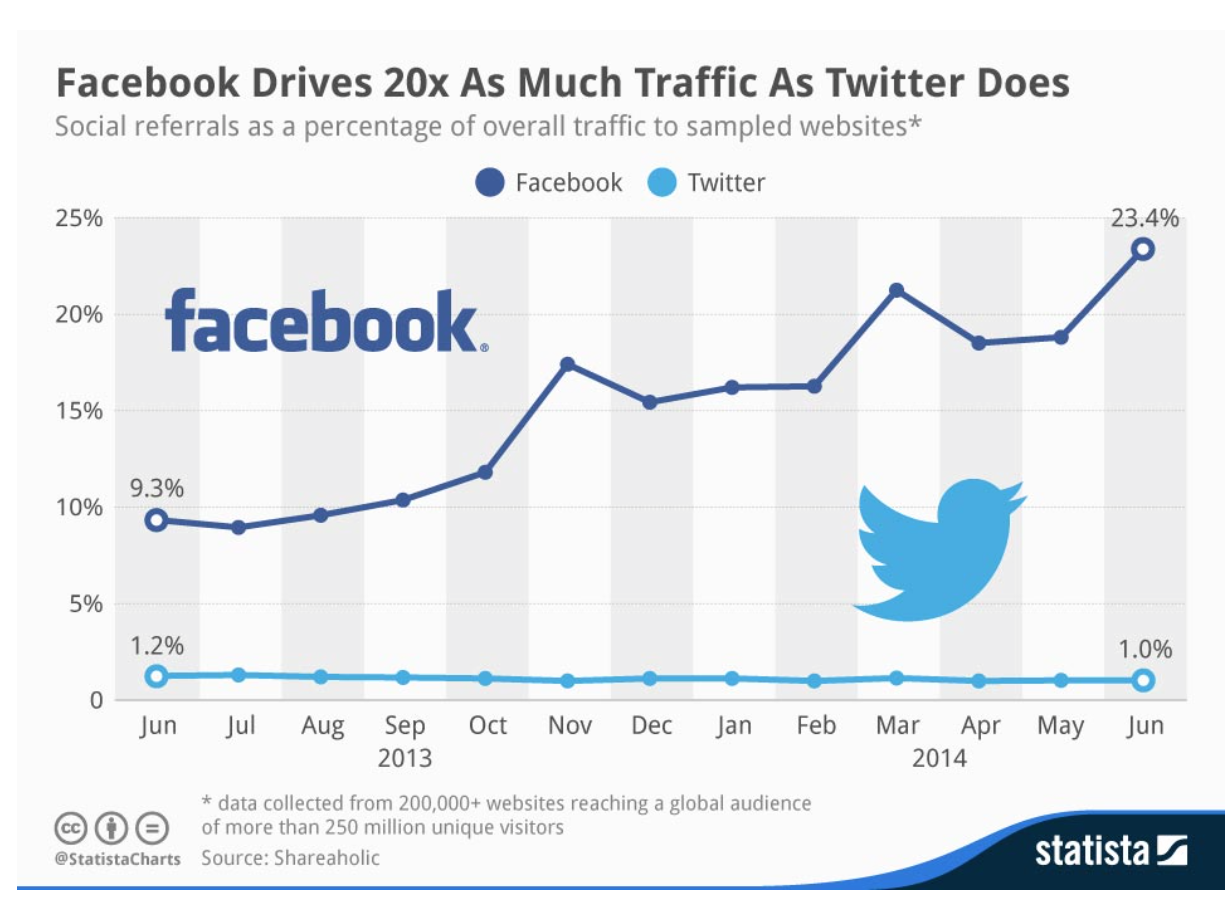
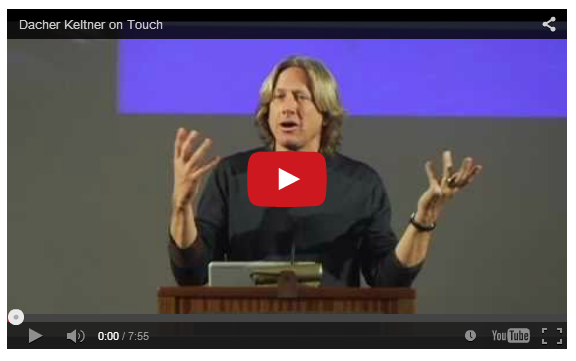
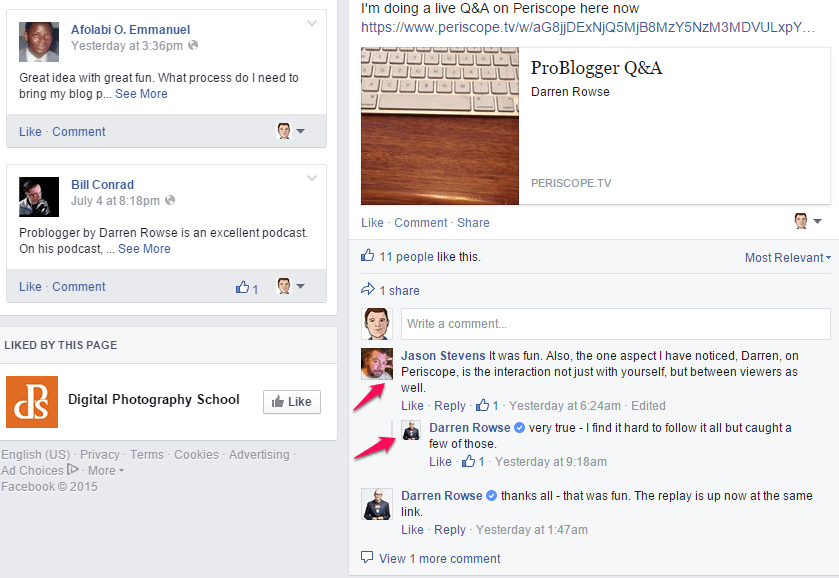
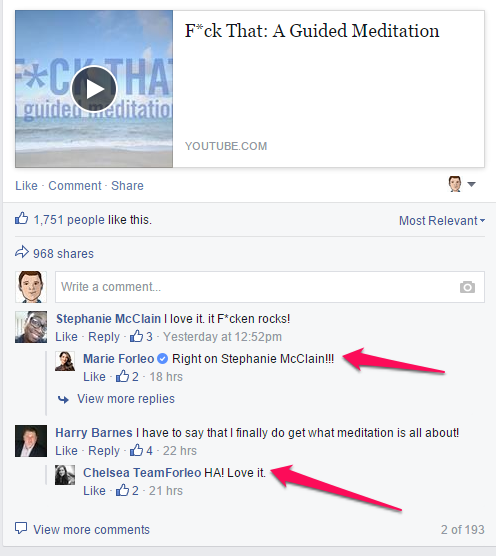
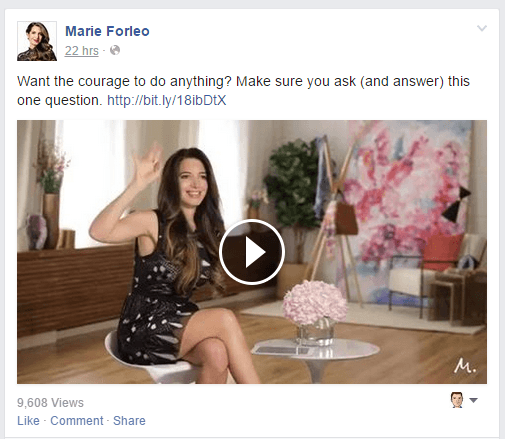
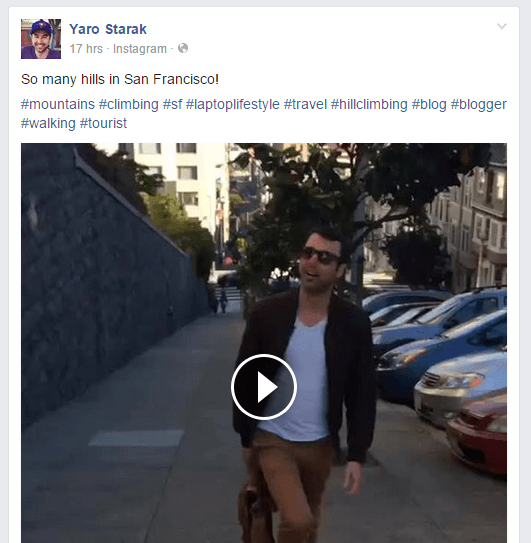

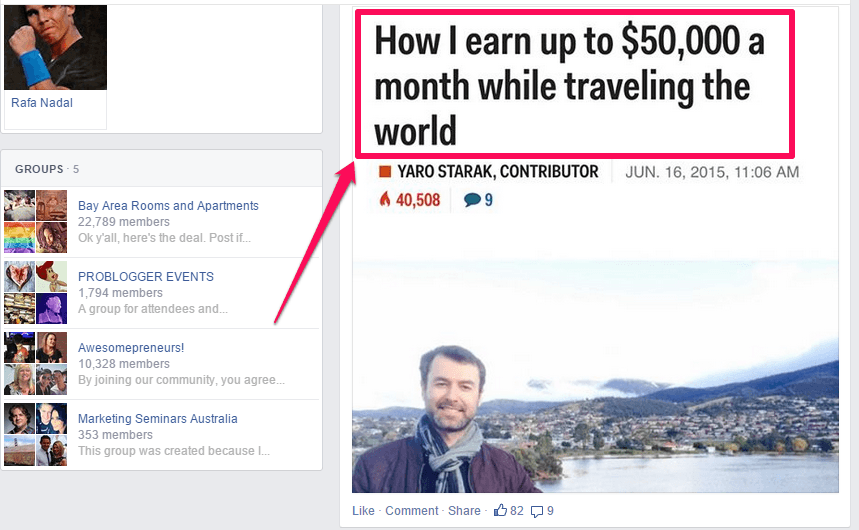

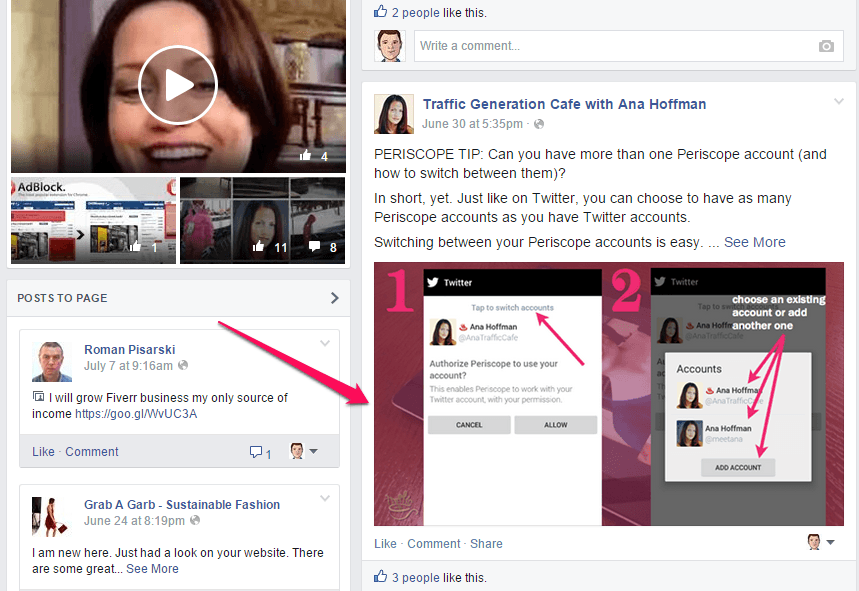
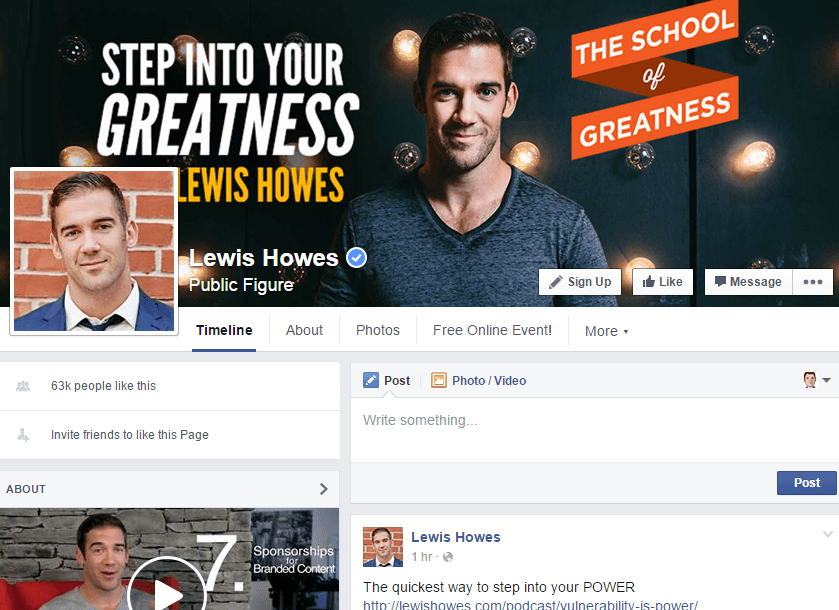
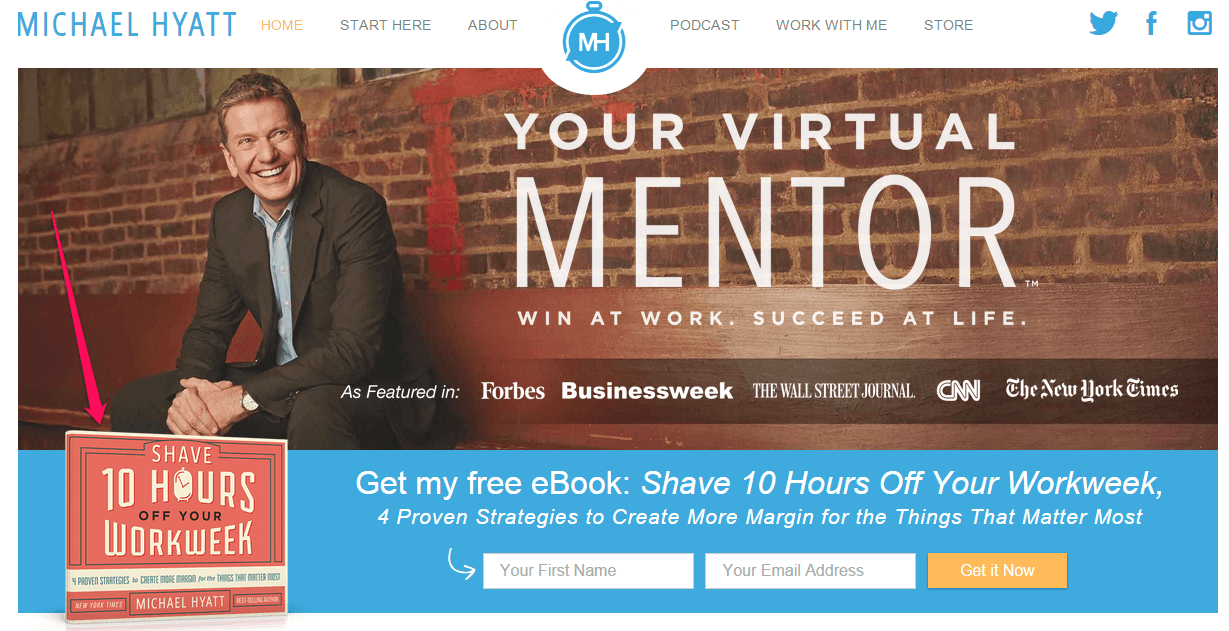
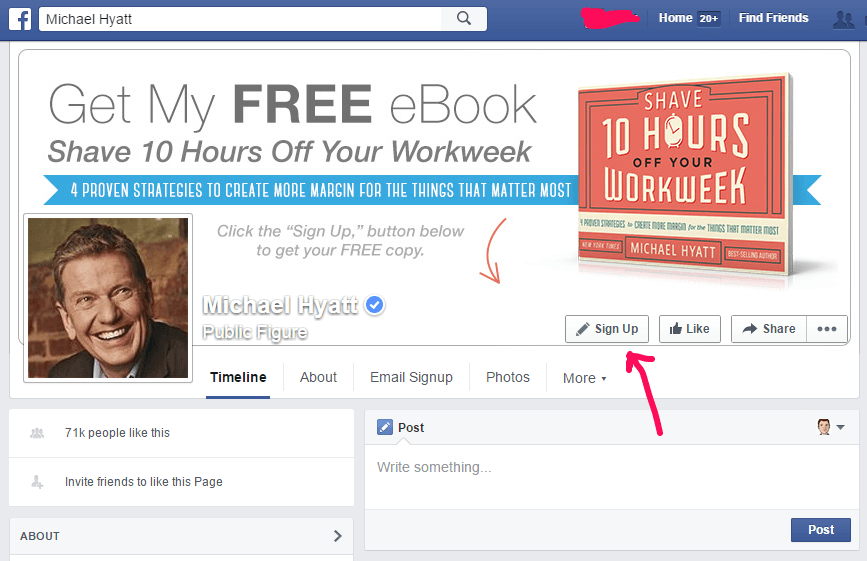
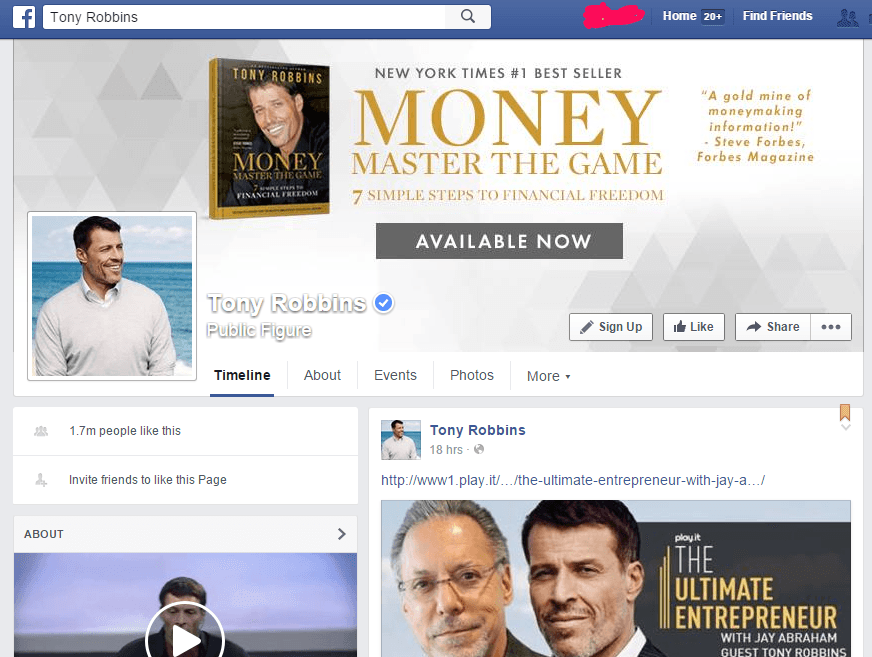
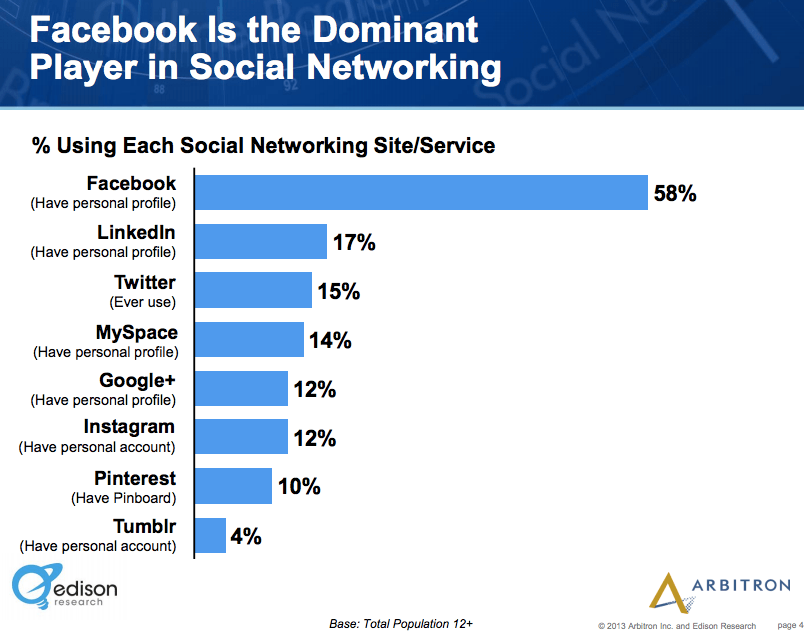
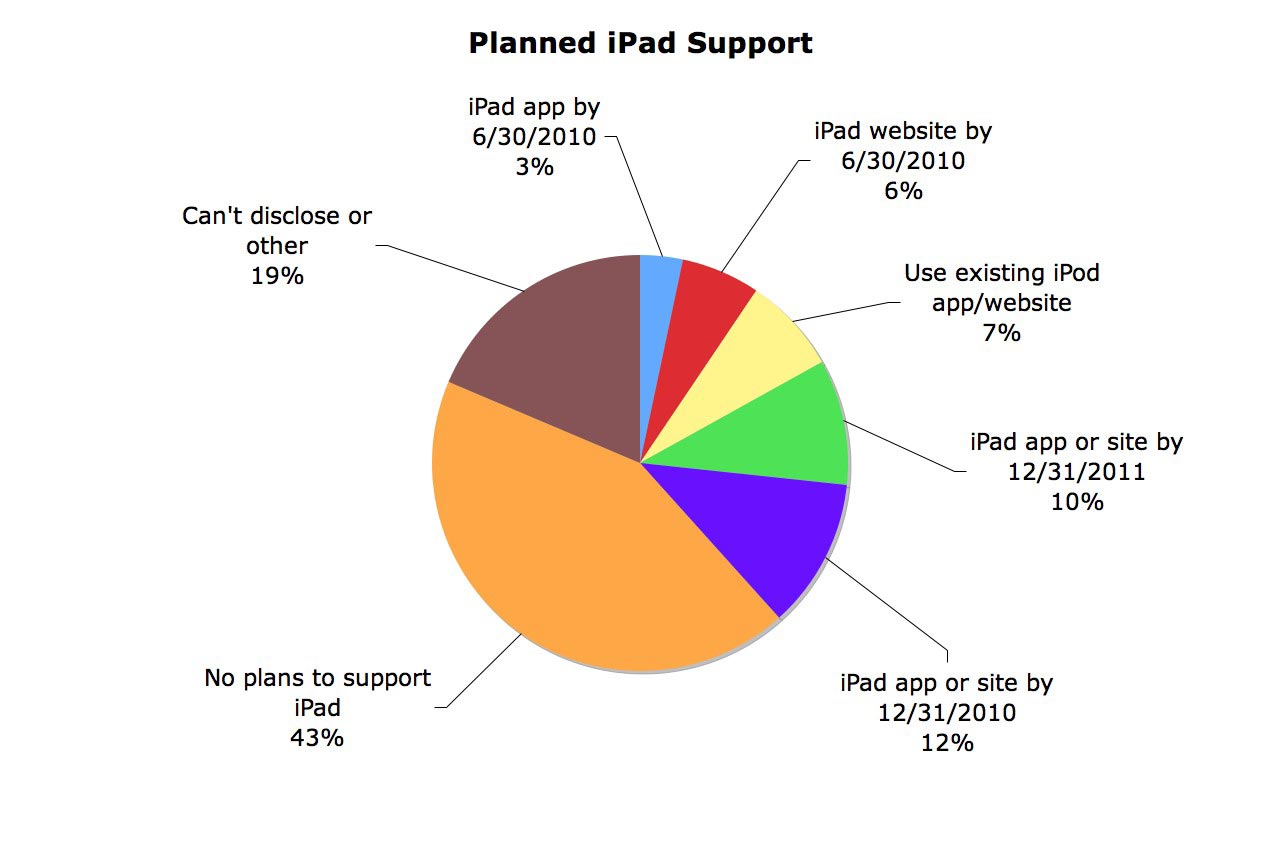



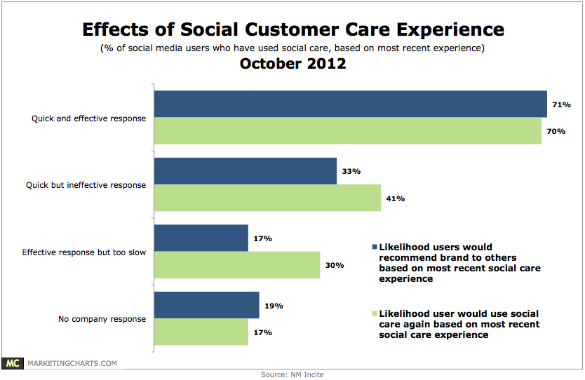


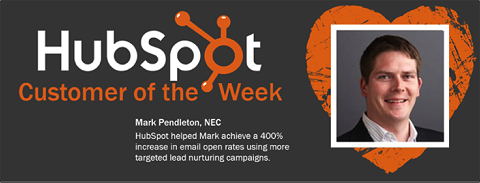


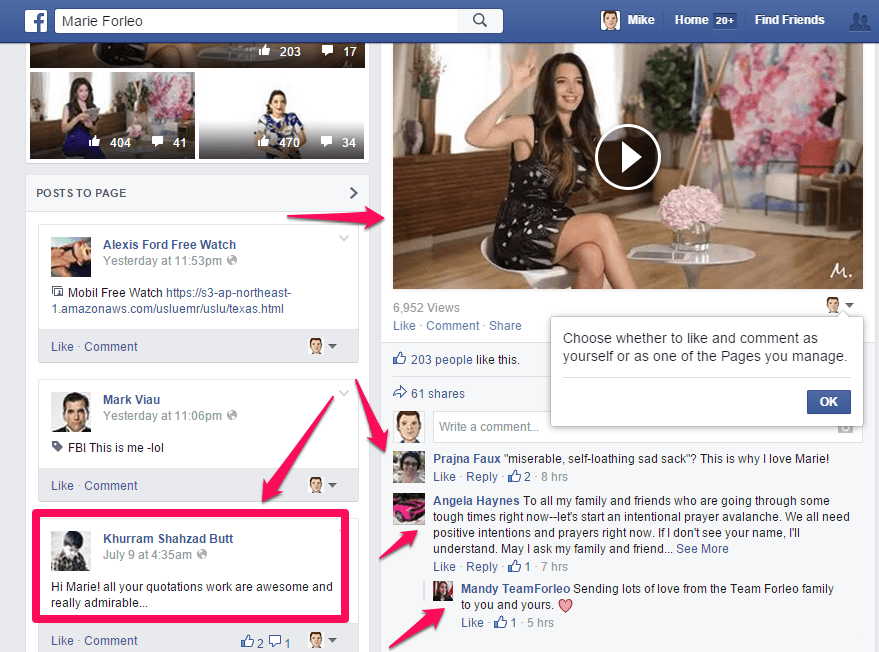
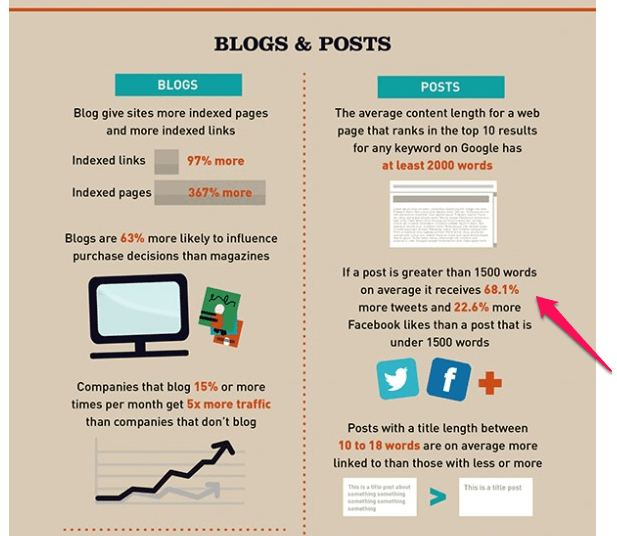
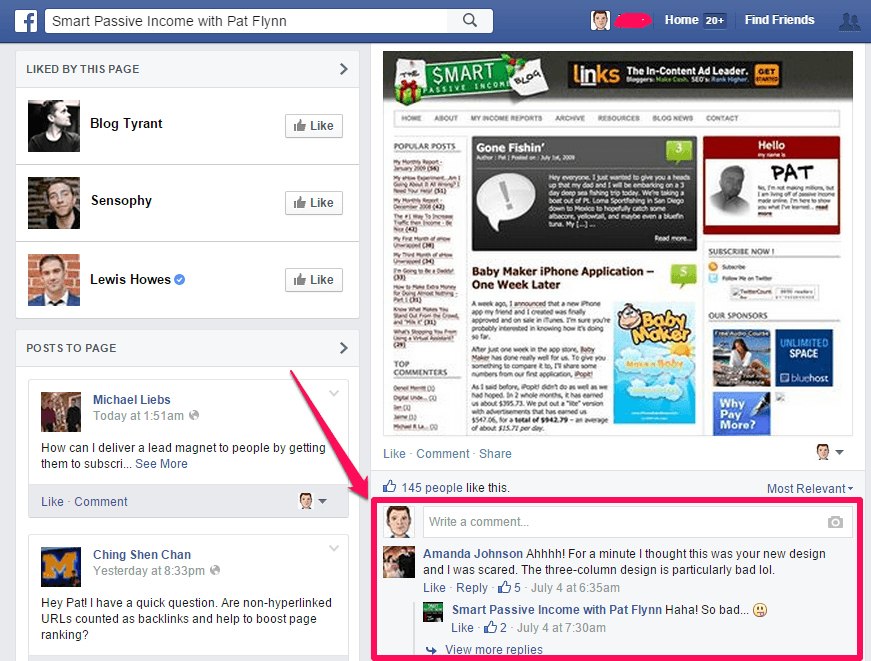
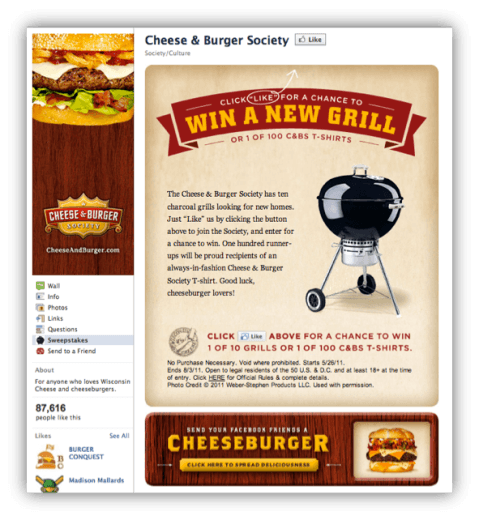











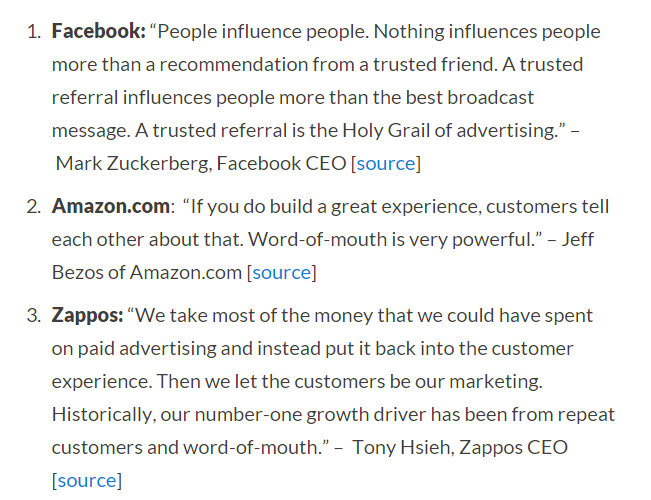




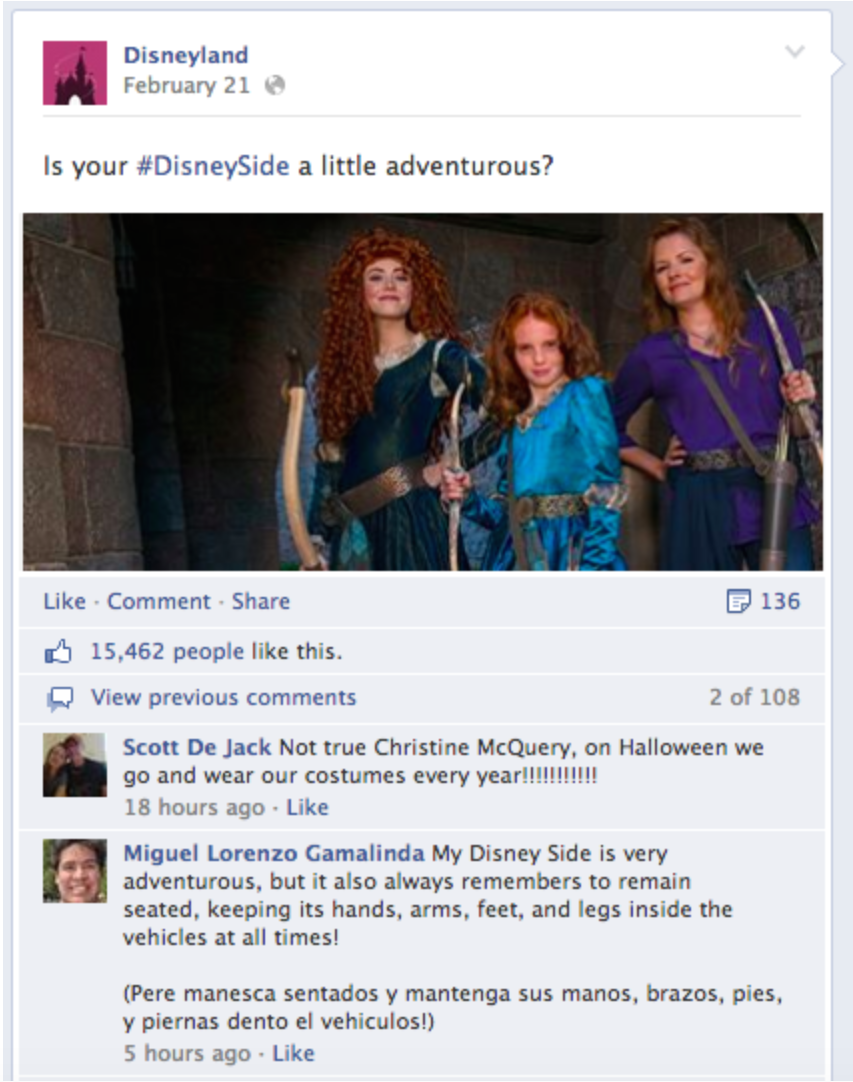
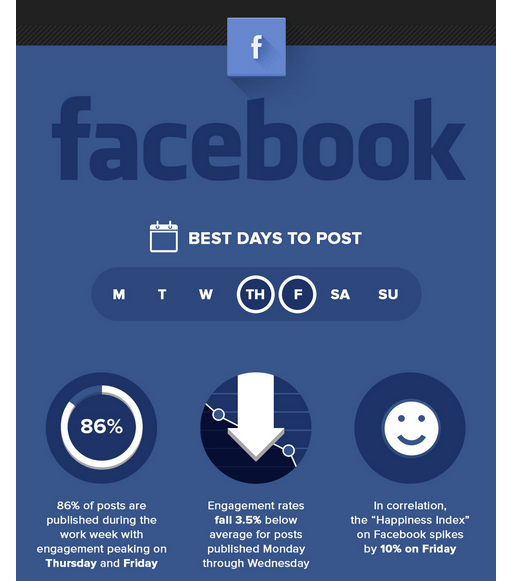


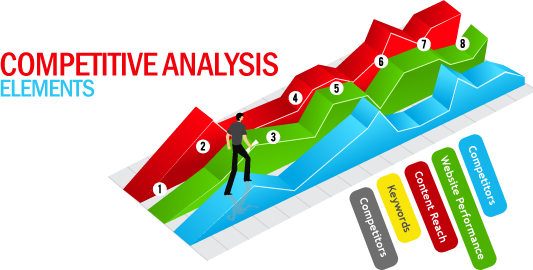







Comments (60)